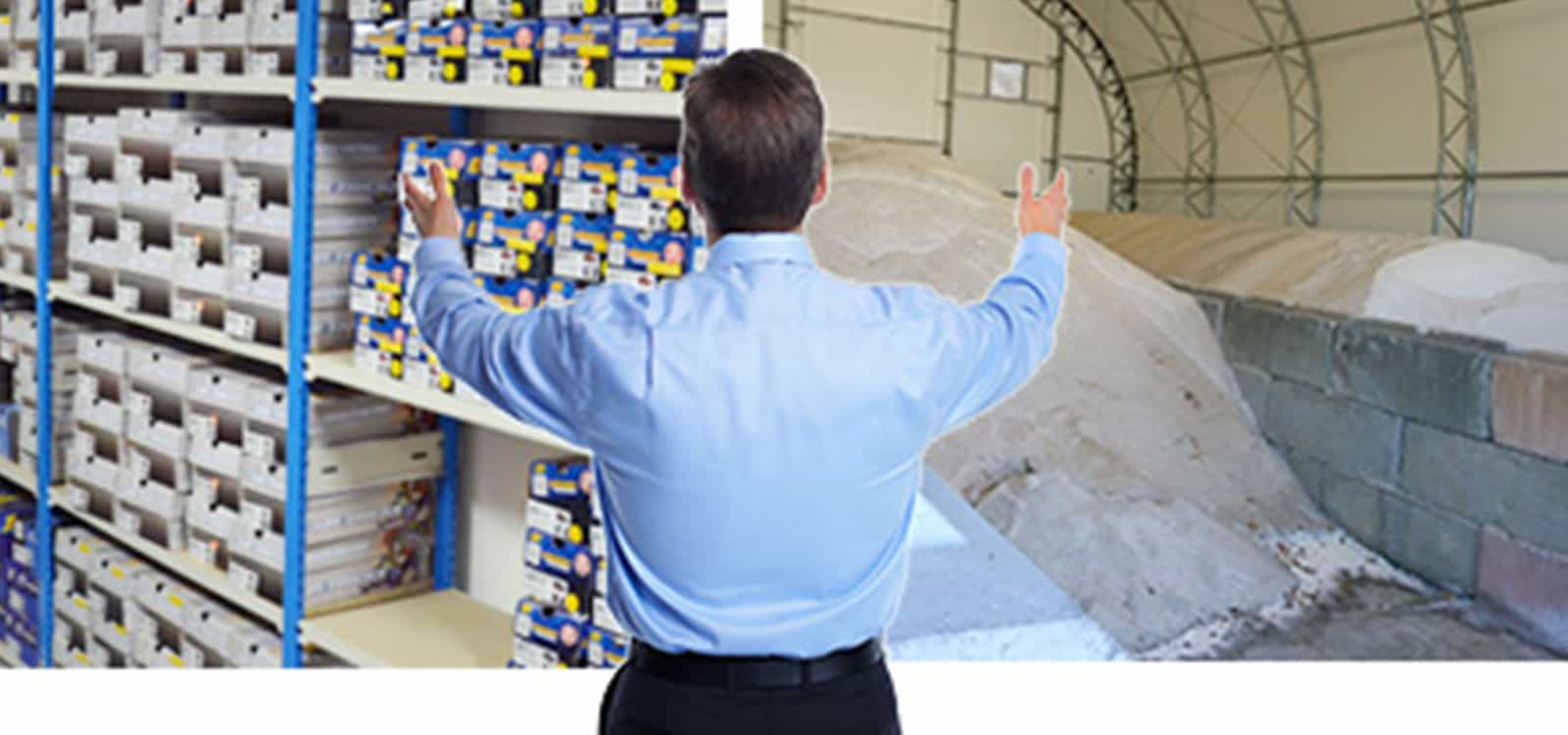January 7, 2016
The Case for More Frequent Physical Inventory Counts

How many hammers and screwdrivers are currently on the shelves at your local hardware store on any given day of the year?
The store’s management has a very accurate count of every product type. Products arrive in neat, countable boxes tagged with codes or RFID devices, and are subsequently sold using bar code scanners. The on-going perpetual inventory of those items is highly accurate, due to the traceability or measurability of the products. Accurate perpetual inventory enables stores to make data driven decisions that improve business operations, and reduce financial write-offs.
Unfortunately, accurate perpetual inventory is much harder to realize in the mining, construction and aggregates industry. That’s because our products don’t arrive neatly in boxes nor get tagged with barcodes. It’s hard to perform an inventory count, as our products are stored in all shapes, sizes, and environments. Our products also change weight, based on moisture and compaction. Our products can be “lost” through erosion and floor loss. We try our best to maintain and manage conversation factors for converting yards to tons. We also produce and sell in tons, yet we inventory in cubic yards or meters. And don’t forget the safety challenges!
Significant Inventory Errors
We have all become accustomed to significant error in our day-to-day perpetual inventories– and the end of year write-off. It is very common to hear a story of a massive, multi-million dollar write-off that a CEO and CFO had to explain to investors and shareholders. Everyone’s site or production manager has had to stand in front of an executive at one point in their career to explain how an error happened– and promise that inventory will be better managed going forward.
Companies in our industry strive to achieve and maintain an inventory +/-5%. However, the actual variation might realistically skew over/under in the range of 20-30% vs.actual. For national or global companies with multiple sites and locations, any variation could easily multiply into the tens, or hundreds of millions of dollars.
Many of us have tried to manage perpetual inventory better by using scales to better manage production and sales. Scales are working well for tracking sales – but still generate variances due to moisture. Scales are being used for tracking critical production, but are challenging to implement for all production, due to cost and maintenance. Therefore, more frequent inventory counts are the most viable solution to addressing perpetual inventory accuracy.
Unlike retailers and manufacturing companies who perform physical inventory counts once or twice per year, materials companies must perform more frequent counts to reduce errors that build up over time. Historically, companies have performed annual inventory counts with quarterly or monthly estimates to help manage write-off risk. Some companies have now advanced to twice-yearly, or even quarterly counts.
The majority of CFOs and controllers would perform more frequent physical inventory counts if time and cost allowed. CFOs and controllers report that the major costs included in conducting a physical inventory count are attributed to management oversight, planning, measuring, reviewing and reconciling data, and updating financial systems. Add to this, the costs of labor and of time, to perform a count using internal or external resources. Every one of these labor and time costs are magnified by the range of a company’s geographic distribution.
Next week’s continuation of this blog post will be: Monthly Physical Inventory Counts are the First Step to Controlling Swings in Inventory
Stay In the Know
Be the first to know about the latest Stockpile Reports news and features.